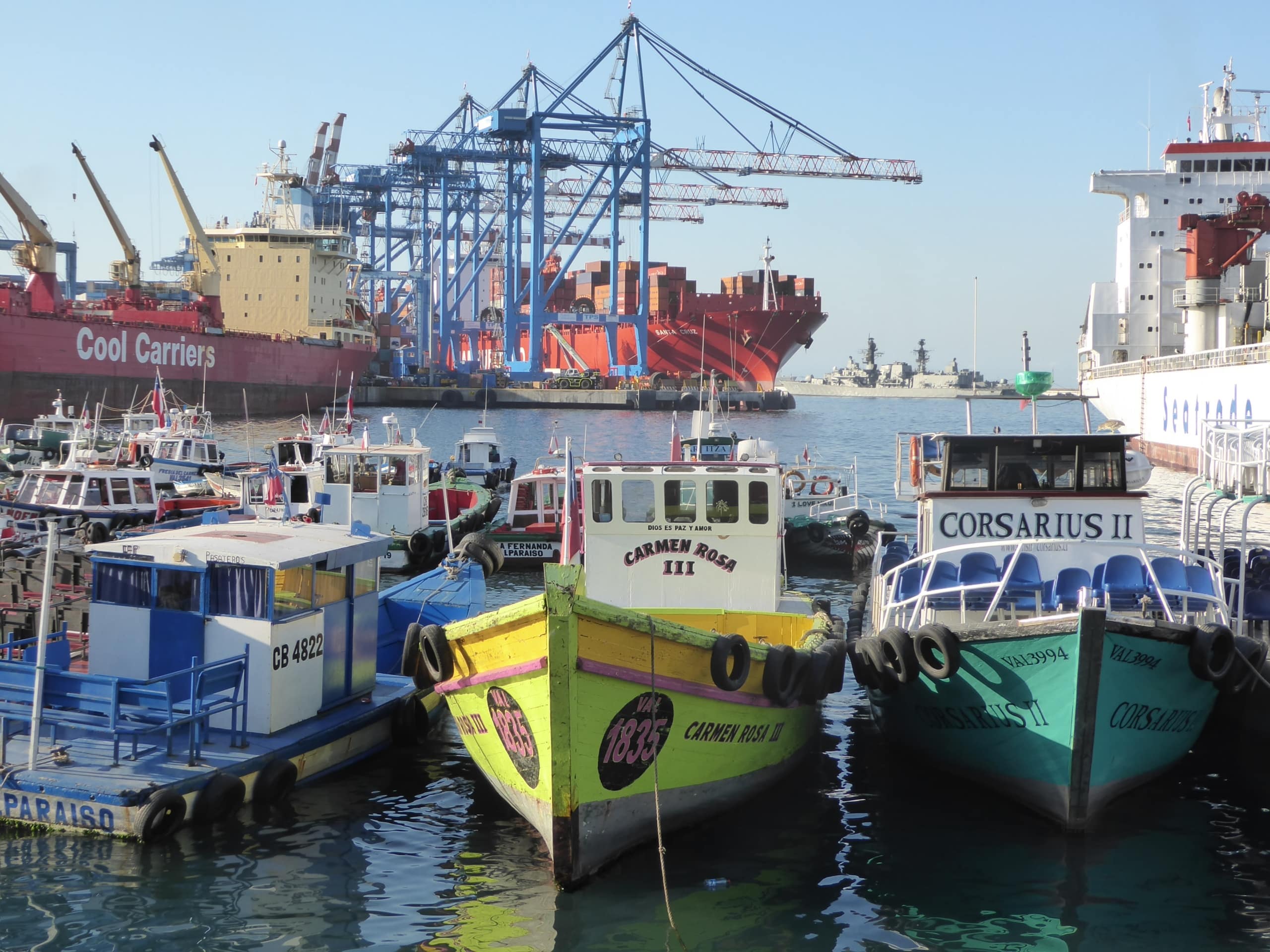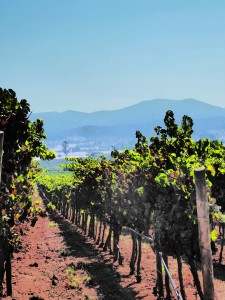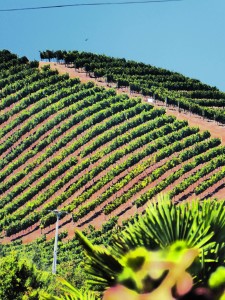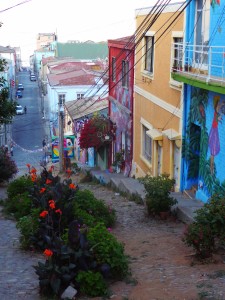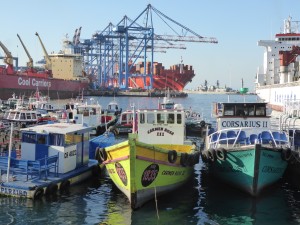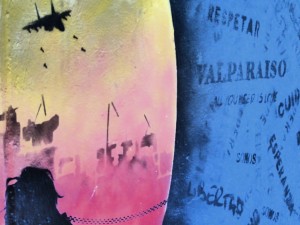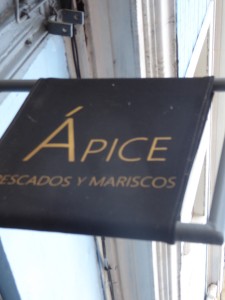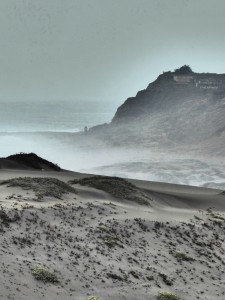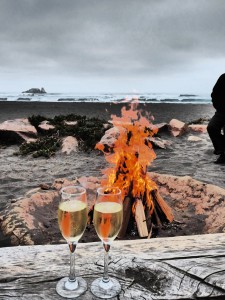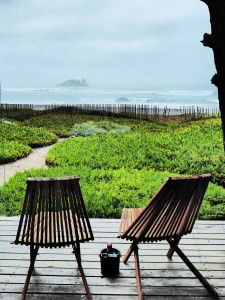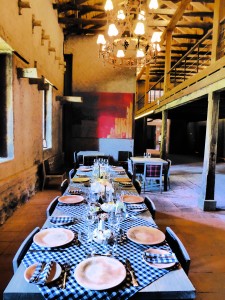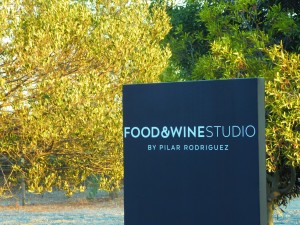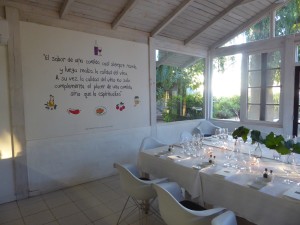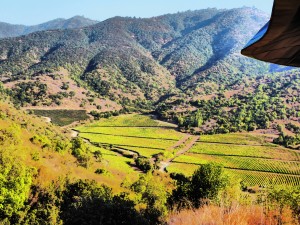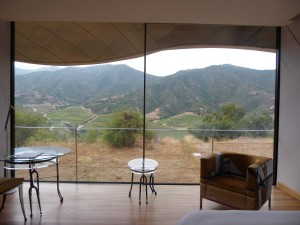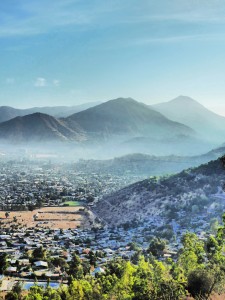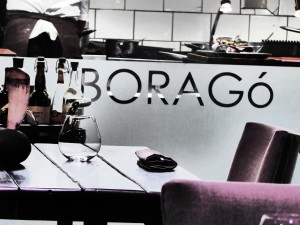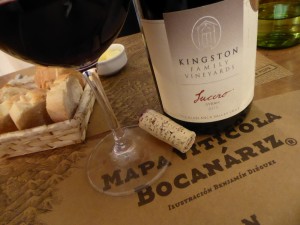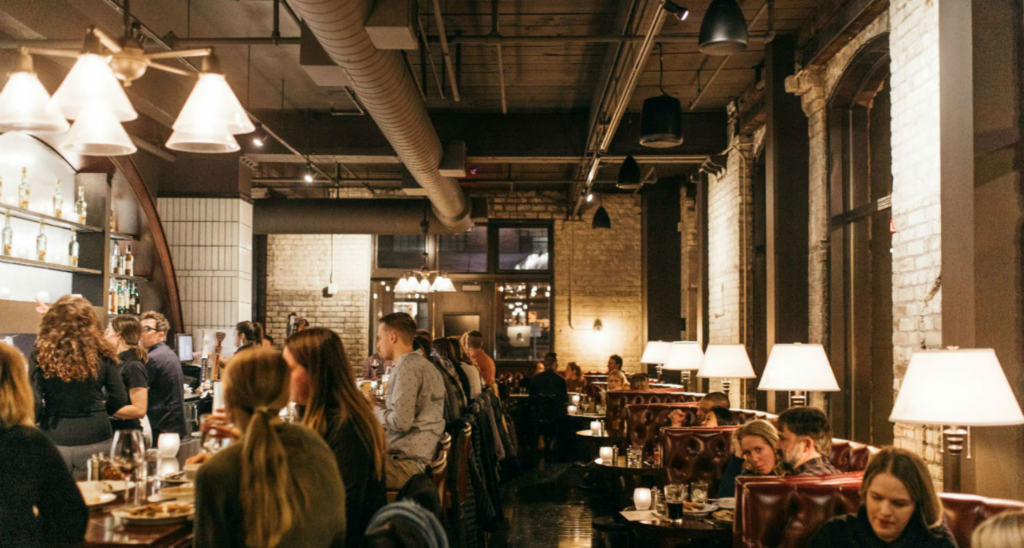April 3, 2017
The best gin and tonic I’ve ever had was in Santiago, Chile.
It wasn’t that special (Hendrick’s and Fever Tree), but after more than a week of wine for breakfast, lunch, happy hour, and dinner, it tasted like springtime.
It surprised us to know you can get tired of wine. Of course, it was momentary. After the gin, we had wine with dinner.
Chile isn’t all about wine. It’s a long, skinny country (only 110 miles wide) with a vast Pacific coastline, deserts, mountains, and the well-known Patagonia. And it’s easy to get (and adapt) to, with just a minor time change and a simple (although long) overnight flight.
But for this trip, it was all about the wine. By bicycle. We made up a group of ten strangers that would spend the next week navigating central Chile, bicycling through the valleys and in and out of the coastal mountains.
After meeting in Santiago (more about the city later), we started a 30-minute transport to our inaugural bike ride. In that time, I was told to sue someone (two attorneys, big surprise) and found out we had a specialist in both infectious diseases and assisted dying (both comforting ideas). The two traveling physicians claimed they would only be helpful in the event of surgery or child delivery (also both comforting), and the group was rounded out by a traveling Brit with a broken arm. For a bicycling trip.
Phew.
Our starting point was Casablanca Valley, east of Santiago, between the city and the Pacific. After setting up our bikes, we set out on a great spin through the gentle rolling hills. It was the start of harvest, which in late March (the Chilean fall) is a bit dry and dusty, yet dramatic. The hills are mostly red clay and decomposed granite, and the climates from being in a hot valley close to the coast.
They plant the grapes through the valleys and up and over the hillsides. Our two destinations for the first day were wineries.
Let the games begin.
Kingston Family Vineyards was first for lunch. The Kingston family is a bunch of bad-asses who decided to grow red-wine grapes in a white-wine valley—to stunning success. They specialize in Pinot and Syrah, and we quickly learned to love their Pinot (typically our least favorite, next to Merlot).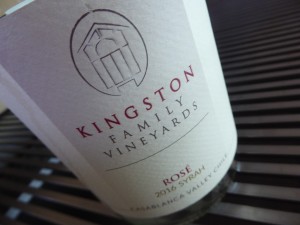
Of course, it may have been that we were drinking the wine while sitting under the brilliant blue sky and bright sun, in the midst of the vineyards overlooking the valley.
After our wine-fueled lunch, we bicycled south to Matetic Vineyards to stay at its eight-room La Casona Hotel, nestled amidst the vineyards. The bicycling helped clear our wine-addled brains and bodies, so we’re ready again for happy hour.
The gardens at Matetic, even a bit dry, were stunning and made up of collections of herbs, lavender, flowers and grasses. 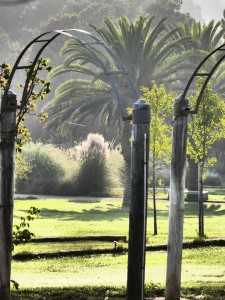 And they were just the backdrop for the grapes surrounding the hotel.
And they were just the backdrop for the grapes surrounding the hotel.
The well-heeled geese roaming the ponds on the property were, however, demanding and territorial. I got the sense they preferred buttered baguette to the boring bread pieces they were tossed. And they, of course, only drank the good wine. 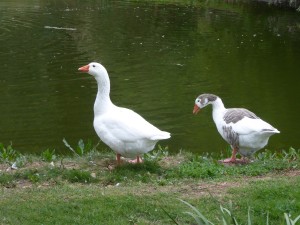
Dinner that night was when all hell broke loose. “Dr. Diarrhea,” the apt nickname that we gave to the infectious disease expert, was definitely not an expert in appropriate dinner conversation. The broken Brit, soon to be dubbed “Captain America,” was a self-proclaimed office equipment salesman… Who quickly became the life of the party (and rode every mile). The surgeon had dogs—one with mental health issues. Yep, you can’t make that up.
The one commonality? We all drank wine. (Of course, we all tried the Pisco sours the country is famous for, too, until we realized they gave us heartburn on the bikes.) 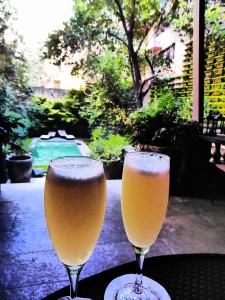
And the more wine we drank, the more “travel the world” stories that came out—ranging from the inappropriate to the downright wrong.
It was a blast.
The first night, we discovered that Cono Sur makes a great Chilean sparkling, so we can maintain our reputation for finding local sparkling wine in every country. Everyday Champagne, you know.
After spending the next day touring the incredible (and vast) Matetic grounds, farms, and winery, we spent the night wandering up and down the graffiti-elevated-to-art-laden streets of Valparaíso.
A special Chilean city, it’s also a World Heritage site and commercial-ship transport hub right on the Pacific. The dinner, at teeny-tiny Apice (a chef-driven restaurant), was one of the highlights of the trip.
The next few days of bicycling took us south, along the black-sand beaches and surf communities of the Pacific coast. The topography was vastly different, and we pedaled up and down 1 to 2 kilometer-long hills paralleling the raw and untamed coastline. Hill-climbing usually isn’t a lot of fun, especially after a hearty, wine-filled lunch.
After one incredible homemade lunch of fresh salads and empanadas, Dr. Diarrhea cycled up behind us on about an 8% grade climb to note, “That’s the kind of lunch that will give us all diarrhea.” Lovely. See how she got her name?
The night at the beach in the small town of Matanzas (at the Surazo Hotel) was a perfect geographic palette cleanser as we sat on the beach in front of the bonfire, doing what else but drinking wine and eating great pizza.
From the coast, we headed back south and west to the Colchagua Valley, near the increasingly popular destination wine town of Santa Cruz. The vineyards here were omnipresent and even more majestic, with seemingly endless rows of green vines leading up to the foothills of the coastal mountain range. 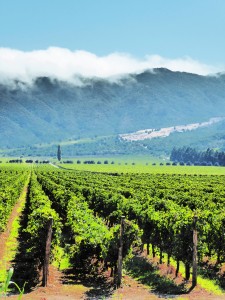
Along with the Maipo region further north, Colchagua is probably the best-known Chilean wine region.
But the wines are still largely a secret.
These aren’t the cheap Chilean wines we think of in the US—they were fantastic. And we had left the Pinots behind (yay!) for the more prominent Carménère, Syrah, and Cabernet grapes.
Neyen was the highlight of the winery stops here, with a location literally at the end of the road. The singular focus on Carménère/Cabernet blends made the vineyard a favorite for several bottles, again at an incredible lunch in the tasting room with what we all declared were the best sandwiches we’ve ever eaten.
I think it was at happy hour that day, with more tastings of Carménère and Petit Verdot, when my liver went into revolt. I swear, it was taking a running start and trying to break a door out of my body for a cold shower.
Sadly, it wasn’t successful—so off to another spectacular culinary experience, this time compliments of famous Chilean chef Pilar Rodriguez at her Food & Wine Studio. After drinking sparkling wine and watching the sunset, we all “hoovered” (the Canadian’s term for “stuffing our faces”) the short ribs.
From Santa Cruz, our next destination was directly over the coastal mountains to the Millahue Valley and the wineries on the Eastern side of the mountains.
As the crow flies, it was maybe only 10 kilometers. On the ass-torturing devices known as bicycles, it was a 5 to 6-kilometer climb, followed by many flat kilometers through the small villages and countryside in between (almost made worth it when we sighted an actual practice session of real Chilean rodeo).
Our ultimate reward? Wide-open solitude on the other side.
There aren’t a lot of wineries on the Eastern side of Colchagua. Our destination, the Vik, commands the entire valley from its hilltop location. It’s nestled between mountains, with the Andes in the distance.
From a bike, the first view of the Vik makes it look like a spaceship has landed on the hilltop. As we arrived, we found the most stunning architecture at both the winery and the hotel, which were designed by two different people so that they’d be unique from each other.
We ended our bike tour here.
The 22 rooms at the Vik all have glass walls with views of the vineyards, valley, and mountains. And these full-height-and-width glass walls slid open in every room so that guests could breathe the fresh mountain and vineyard air. Every room has a different design.
The Vik treasured their wines more than anyone else we had met along the way. At that point, our whole group was akin to a starving bear coming off winter when it came to wine, so the pomp and circumstance (and time) it took to fill our glasses made us a tad impatient and obnoxious. (Okay, we were obnoxious the whole week already.) Especially in the not-so-gentle teases and heated debates pitting Canada against the USA (our group was split half and half, with the Broken Brit dumped in).
And, of course, what does a well-traveled, well-educated group of (supposed) adults do at the nicest hotel of the week? Drink too much wine and challenge each other to ping-pong and pool tourneys. I’m sure the hotel staff was thrilled to see us depart.
Goodbye to the Broken Brit, aka Captain America, who got a bit too excited about granola bars, the acclaimed surgeon who loved to annoy us with her dog pictures, and Dr. Diarrhea and her assisted-death offer (thanks, but no thanks). Goodbye to the ob-gyn, the pig-tailed pilot, and goodbye to the ultimate American (always helpful with all those Canadians), who was the most well-traveled and adventurous person I’ve ever met (and that’s saying a lot)—and the incredibly funny, “Sue the bastard!” attorneys. Our global-nomad guide really deserved a medal after handling our crew.
Back to Santiago.
Santiago is the jumping-off point for Chilean travel. It’s more South American (for comparison, Buenos Aires feels borderline European), and it has its beloved smog and traffic. We’d classify it as a good one or two-day town.
It’s a simple city to choose a good location and navigate from there. The best neighborhoods are Barrio Lastarria and Barrio Italia, and the hotel recommendations are somewhat limited. Our favorite for location, size, and service is Singular in Barrio Lastarria.
On the more economical side, try the following:
Matildas Hotel Boutique in the more central city neighborhood of Barrio Brasil.
The Aubrey in the aristocratic district of Providencia (although this is a sub-neighborhood of Bellavista, which is at the base of San Cristóbal and filled with lots of lots of clubs and tourist-driven places). A great place to stay if you like hearing the “thump, thump” of clubs at about 4 a.m.
In both, book a better room, because the basics are very basic.
If you’re more comfortable with quality brands, try the Ritz, but its location near the Costanera Center feels more downtown-and-shopping-mall than neighborhood- walking.
Beyond exploring the two neighborhoods, a must-do is the walk up to San Cristóbal, the Virgin Mary monument and chapel. It’s a trek for tourists and locals alike on bike or on foot, and it’s a gentle 5-kilometer climb to the best views of the smoggy city.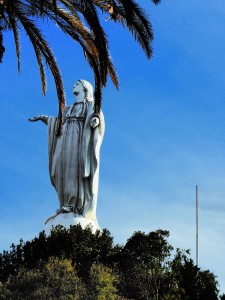
And don’t miss the Mercado Central. Many European and South American cities have central markets, but this one was a great combo of fish displays and market, with restaurants peppered throughout. It’s near the Plaza de Armas.
For restaurants:
Borago commands the most attention, with its name on the World’s 50 Best list and almost-too-creative cuisine, but it’s an entertaining adventure.
On the more casual side, the Lastarria neighborhood has a few great ones: Bocanáriz, Mulato for lunch on the sidewalk patio, and Chipe Libre. The rooftop of the Singular hotel is also a great spot for a much-needed gin and tonic and small plates.
If you like to stand in line for notable sandwiches as big as your head, try Fuente Alemana.
If you’re wandering around Barrio Italia, the street is filled with options, but a real treat is the back courtyard at Casaluz.
Hasta luego, Chile—until we meet again.


